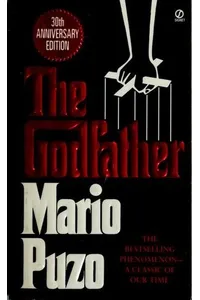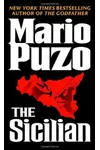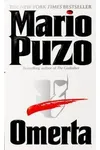Step into the shadowy, captivating world of The Godfather, where loyalty, power, and family ties weave a thrilling tale of the American mafia! Mario Puzo’s iconic crime saga, starting with the 1969 novel, redefined the genre with its gripping portrayal of the Corleone family’s rise and struggles in New York’s underworld. From smoky backrooms to lavish estates, this series is a masterclass in storytelling that keeps readers hooked.
Blending raw emotion with intricate plots, The Godfather isn’t just about mob wars—it’s a deep dive into the human condition. Its universal themes and unforgettable characters have made it a cultural juggernaut, spawning legendary films and inspiring countless stories. Ready to explore the Corleone legacy? Let’s dive in!
How The Godfather Began
In the late 1960s, Mario Puzo, a struggling Italian-American writer, drew from his heritage and fascination with organized crime to craft The Godfather. Initially a standalone novel, it was born from Puzo’s desire to tell a story about power and morality through the lens of a mafia family. Published in 1969, the book became a bestseller, captivating readers with its vivid characters and moral complexity. Its success sparked sequels and cemented Puzo’s legacy.
Puzo’s inspiration came from real-life mafia tales and his own experiences in New York, blended with fictional flair. He envisioned Don Vito Corleone as a mythic figure—a man of honor in a dishonorable world. This vision laid the foundation for a saga that would resonate across generations.
The Heart of The Godfather
The Godfather series spans several books, with the original 1969 novel at its core. It follows Don Vito Corleone, the patriarch of a powerful mafia family, and his son Michael, who reluctantly inherits the empire. The story explores their battles against rival gangs, betrayals, and the personal cost of power, set against a richly detailed 1940s–1950s New York.
Sequels include The Sicilian (1984), a standalone tale of Sicilian outlaw Salvatore Giuliano, loosely tied to the Corleone saga, and The Godfather Returns (2004) and The Godfather’s Revenge (2006), written by Mark Winegardner. These expand Michael’s reign and the family’s legacy, diving deeper into political intrigue and moral dilemmas. The series’ themes—loyalty, betrayal, family, and the corrupting nature of power—resonate universally, while its cinematic prose and vivid settings immerse readers in a world of danger and decadence.
Puzo’s style blends gritty realism with operatic drama, making every deal and double-cross feel monumental. The books’ settings, from New York’s bustling streets to Sicily’s rugged hills, ground the saga in a tangible sense of place, while the Corleones’ struggles mirror timeless human conflicts.
Why The Godfather Resonates
The Godfather’s impact on crime fiction and popular culture is undeniable. It elevated the mafia genre from pulp to literature, inspiring works like The Sopranos and countless novels. Its exploration of power and morality speaks to readers across eras, while its characters—Vito’s stoic wisdom, Michael’s tragic arc—feel like archetypes. The 1972 film adaptation, directed by Francis Ford Coppola, amplified its reach, but the books remain a cornerstone of storytelling.
Today, fans still devour the series for its blend of suspense, drama, and heart. Its ability to humanize complex characters keeps it relevant, proving that even in a world of crime, the deepest stories are about family and choice.
- Publication Years: 1969 (The Godfather), 1984 (The Sicilian), 2004 (The Godfather Returns), 2006 (The Godfather’s Revenge)
- Books: 4 core novels
- Awards: The original novel topped bestseller lists and inspired Oscar-winning films
Grab The Godfather and dive into the Corleone family’s thrilling, treacherous world! Whether you’re a crime fiction fan or a newcomer, this saga’s blend of heart and grit will leave you wanting more.


